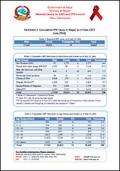What's New
Displaying results 2081 - 2090 of 4052

Resource | Publications,
The World Health Organization (WHO) Headquarters and Regional Offices for Eastern Mediterranean, South-East Asia and the Western Pacific organized a four-day “HIV and STI guidelines dissemination workshop in Asia and the Pacific” in Bangkok, Thailand from 8 to 11 August 2016. The main objective of the workshop was to provide Member States and partners a better understanding of the technical elements of WHO HTS 2015 and ART 2016 guidelines and support national adaptation and implementation of recommendations in the guidelines.
Consolidated guidelines for antiretroviral drugs, key populations, strategic information, HIV Testing services and STI are intended to simplify guidance and harmonize all guidelines based on a public health approach to reach the 90-90-90 global targets by 2020 and the Sustainable Development Goal of ending AIDS and STI epidemics by 2030.
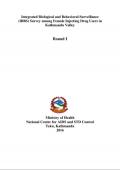
Resource | Publications,
This is the first round of the IBBS survey conducted among Female Injecting Drug Users in Kathmandu Valley (Kathmandu, Lalitpur and Bhaktapur districts). A total of 160 females of 16 years and above who had been injecting drugs for at least three months preceding the survey were recruited randomly using network sampling method.
The fieldwork for the survey was conducted from April to July 2016. The survey was undertaken primarily to track the prevalence of HIV, Syphilis, Hepatitis B and Hepatitis C infection among Female Injecting Drug Users. The aim of the survey was to find out the baseline status of comprehensive knowledge of HIV/AIDS, risky sexual and injecting behaviors among Female Injecting Drug Users, their exposure to various HIV/AIDS prevention, treatment, care, and support programs. The information was collected using tablet-based structured questionnaire, and the prevalence of HIV, Syphilis, Hepatitis B and Hepatitis C was tested by using rapid kits.
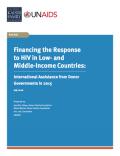
Resource | Publications,
This report tracks funding levels of the donor governments that collectively provide the bulk of international assistance for AIDS through bilateral programs and contributions to the Global Fund to Fight AIDS, Tuberculosis, and Malaria. Donor government funding to support HIV efforts in low- and middle-income countries fell for the first time in five years in 2015, decreasing from US$8.6 billion in 2014 to US$7.5 billion.
The report produced as a partnership between the Kaiser Family Foundation and UNAIDS provides the latest data available on donor funding disbursements based on data provided by governments. It includes their bilateral assistance to low- and middle-income countries and contributions to the Global Fund as well as UNITAID.
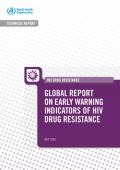
Resource | Publications,
With increasing global use of antiretroviral therapy (ART) to both treat and prevent HIV, and increasing global trends in HIV drug resistance ( HIVDR), efforts to improve HIV programme quality and prevent the emergence and transmission of drug-resistant HIV must be strengthened.
This global report is based on 59 countries that reported data from more than 12 000 clinics from cohorts of patients receiving ART between 2004 and 2014. The report includes the most recent clinic-level data reported to WHO in 2015 –2016 and reflects a lag due to the 12 month cohort reporting period.
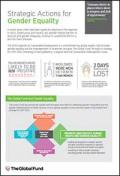
Resource | Publications,
In recent years, there have been significant advances in the response to AIDS, tuberculosis and malaria. But gender-related barriers to services and gender inequality continue to undermine efforts to end the three diseases.
The 2030 Agenda for Sustainable Development is a commitment by global leaders that includes gender equality and the empowerment of all women and girls. The Global Fund, through its strategy for 2017-2022, Investing to End Epidemics, is aligned with the Sustainable Development Goals.
Strategic Actions to Advance Gender Equality (SAGE) is an organization-wide initiative whose purpose is to ensure that the Global Fund is investing in programs that advance gender equality. The purpose of SAGE is to support countries in addressing gender-related barriers by implementing programs that are built on strong leadership and that rest on sound, forward-looking policies and procedures.
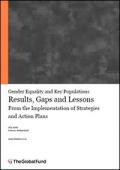
Resource | Publications,
The Gender Equality Strategy (2008) and Sexual Orientation and Gender Identities (SOGI) Strategy (2009) were the first formal, strategic commitments by the Board of the Global Fund to addressing these areas within the institution’s policies and investments.
In January 2016, the Community, Rights and Gender department commissioned a Rapid Review of the current frameworks for implementing the strategies - the Gender Equality Action Plan 2014-2016 and the Key Populations Action Plan 2014-2017. The review was conducted in January – March 2016 by an independent consultant, informed by over 45 key stakeholder interviews and 70 resources. It focused on the role of the Global Fund Secretariat in developing, implementing, monitoring and promoting the action plans. The review will be complemented by a thematic evaluation of implementation of the Gender Equality Strategy at the country level, to be conducted by the Technical Evaluation Reference Group.
This review presents extensive examples of the progress being achieved by the Global Fund in implementing the objectives and activities outlined in its action plans on gender equality and key populations.
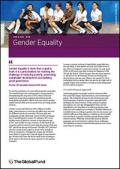
Resource | Publications,
Gender equality is more than a goal in itself. It is a precondition for meeting the challenge of reducing poverty, promoting sustainable development and building good governance.
To end the epidemics, we must address gender inequality. The Global Fund’s new strategy takes a strong stand on strengthening the response to HIV, tuberculosis and malaria by supporting programs that address gender inequalities and gender-related risks and remove gender-related barriers that prevent people from accessing health services.

Resource | Publications,
Key populations are people who are at heightened risk of HIV, TB and malaria, and who face reduced access to services, and criminalization, marginalization or human rights violations. Those who fall outside of the above definition of key populations, but experience a greater vulnerability to and impact of HIV, TB and malaria, such as adolescent girls and young women in East and Southern Africa, are considered vulnerable populations. To end the epidemics, we must increasingly concentrate our efforts on providing prevention, treatment and care to both key and vulnerable populations.
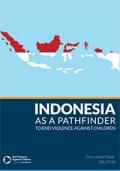
Resource | Publications,
In 2006, the United Nations Secretary-General submitted a landmark report on ending violence against children. This report set an agenda that has been taken forward by the Special Representatives of the Secretary-General on Violence against Children, and for Children and Armed Conflict, and by the Committee on the Rights of the Child.
Agenda 2030 provides a focus for renewed ambition. It recognises that peace and sustainable development are interlinked, and sets targets to end all forms of violence against children. The Global Partnership to End Violence Against Children provides a platform for national governments, civil society, faith-based groups, academics, the private sector, international organisations and other partners to work together to deliver these targets.






